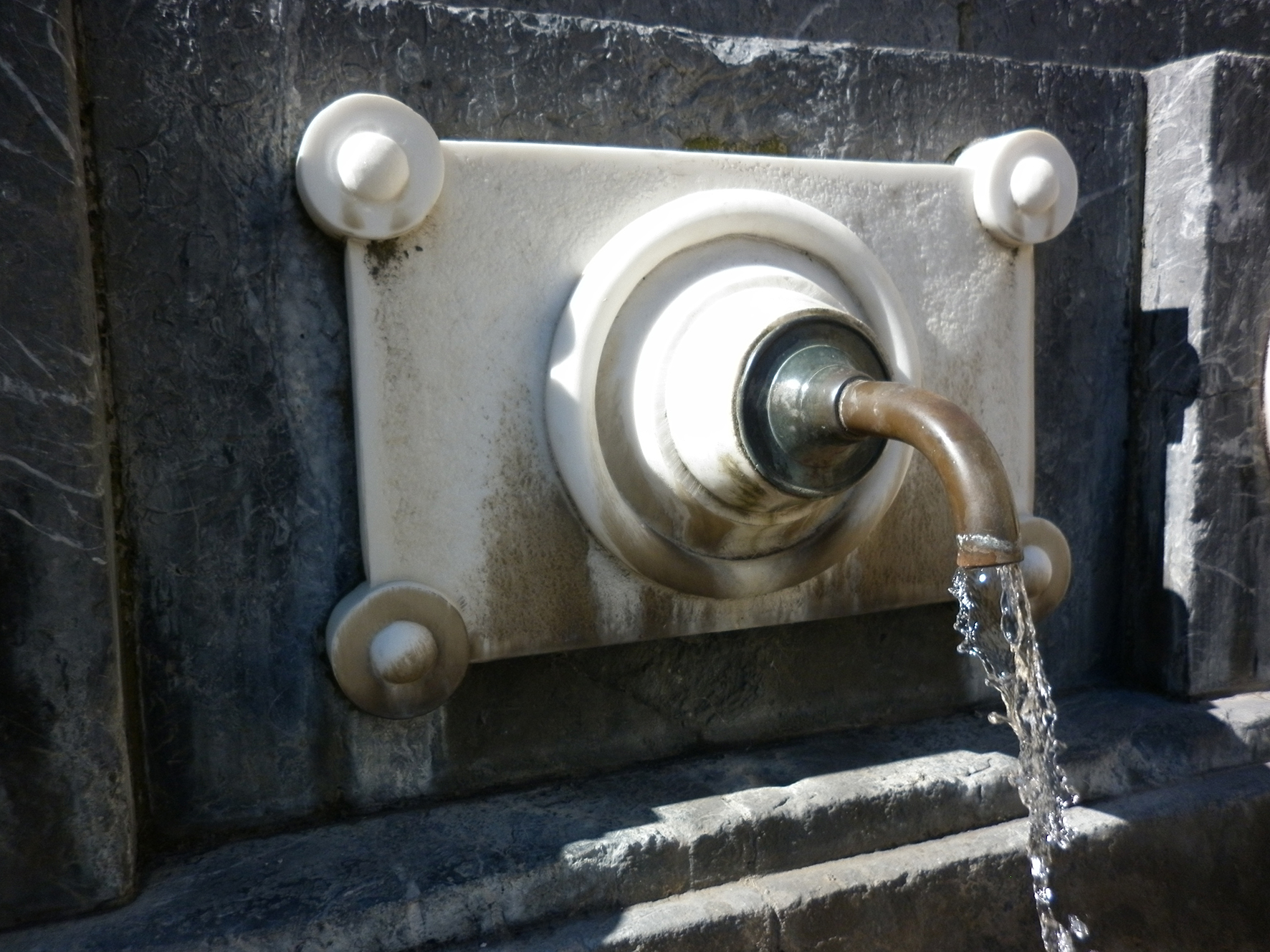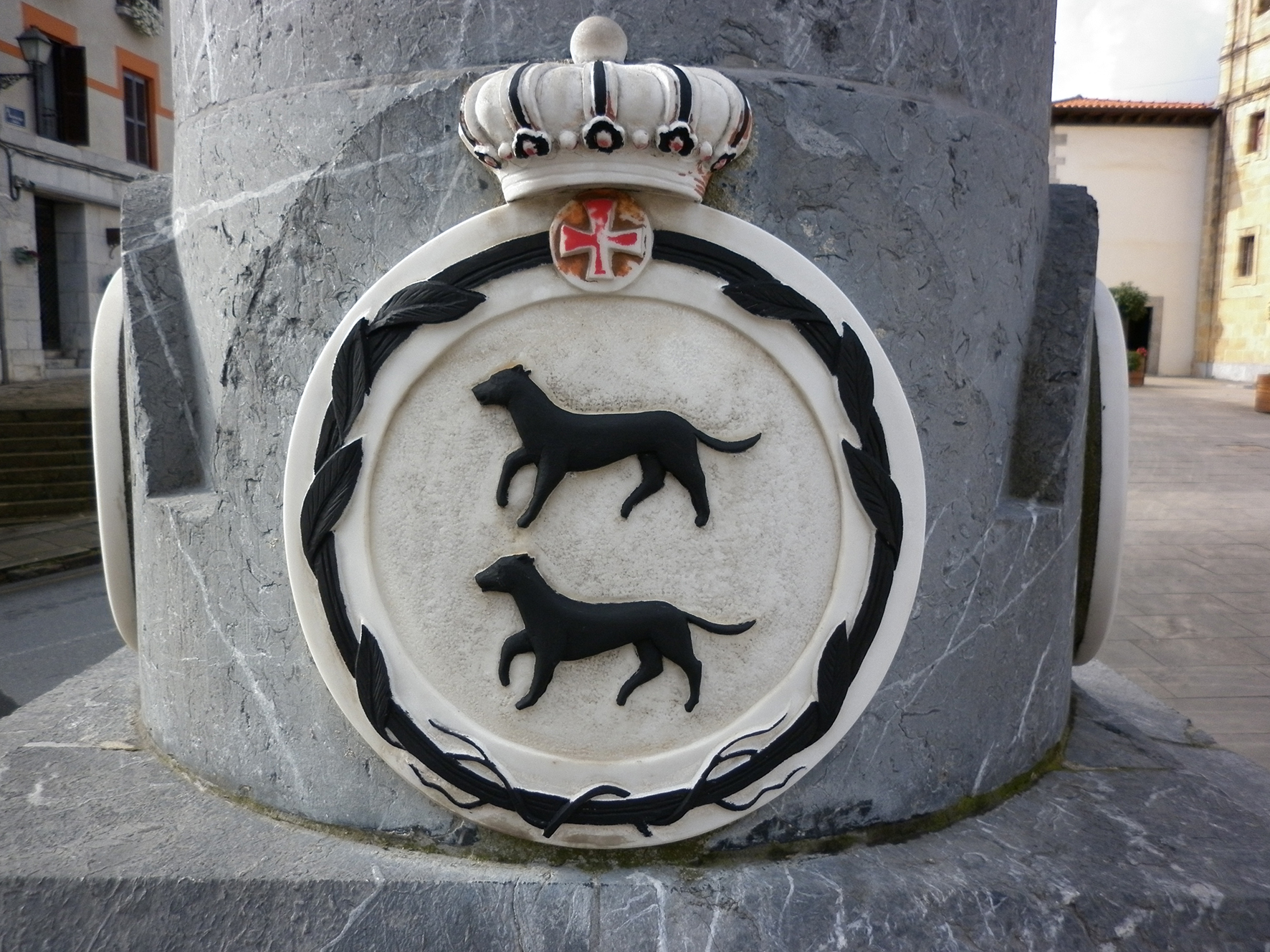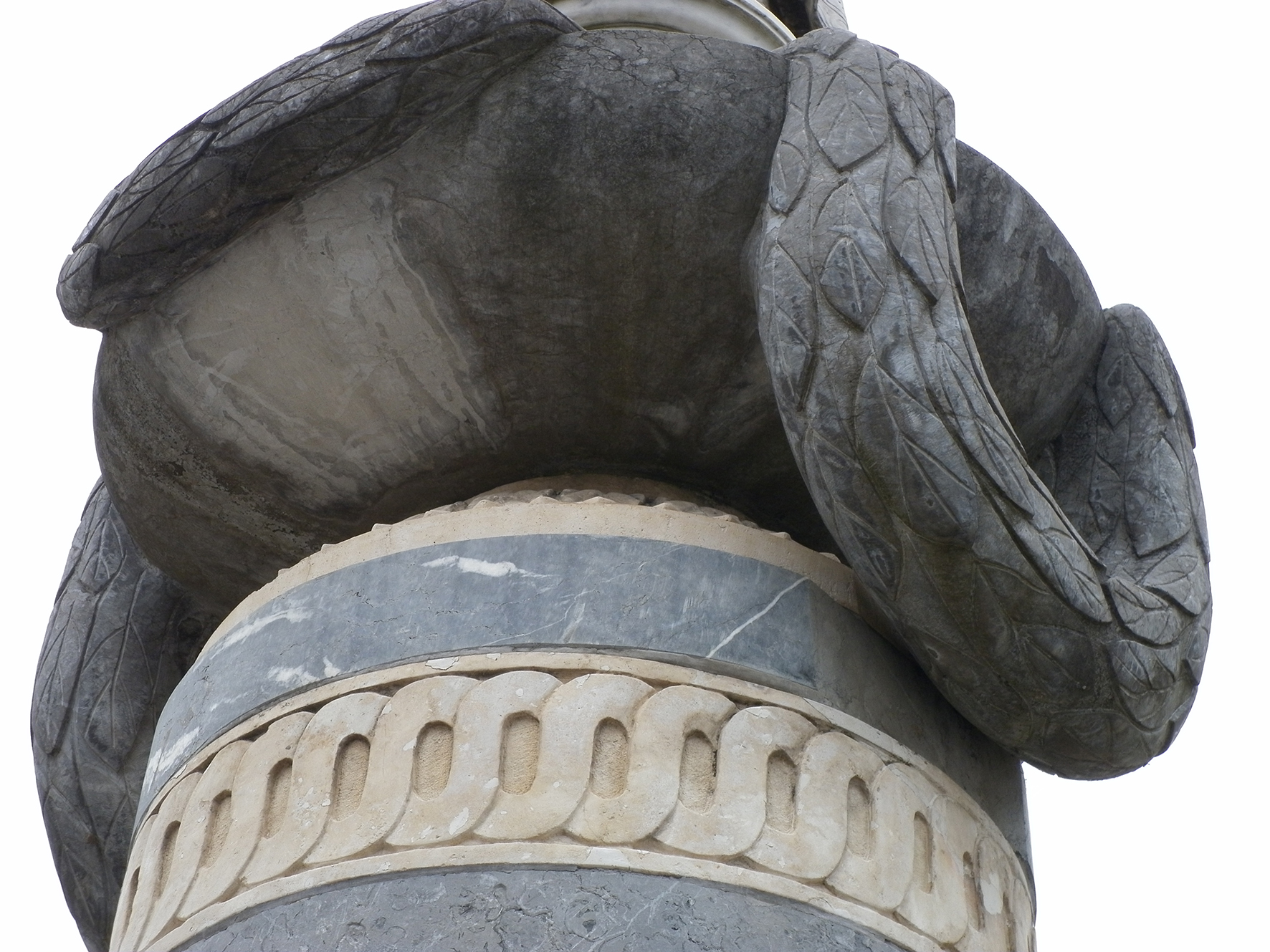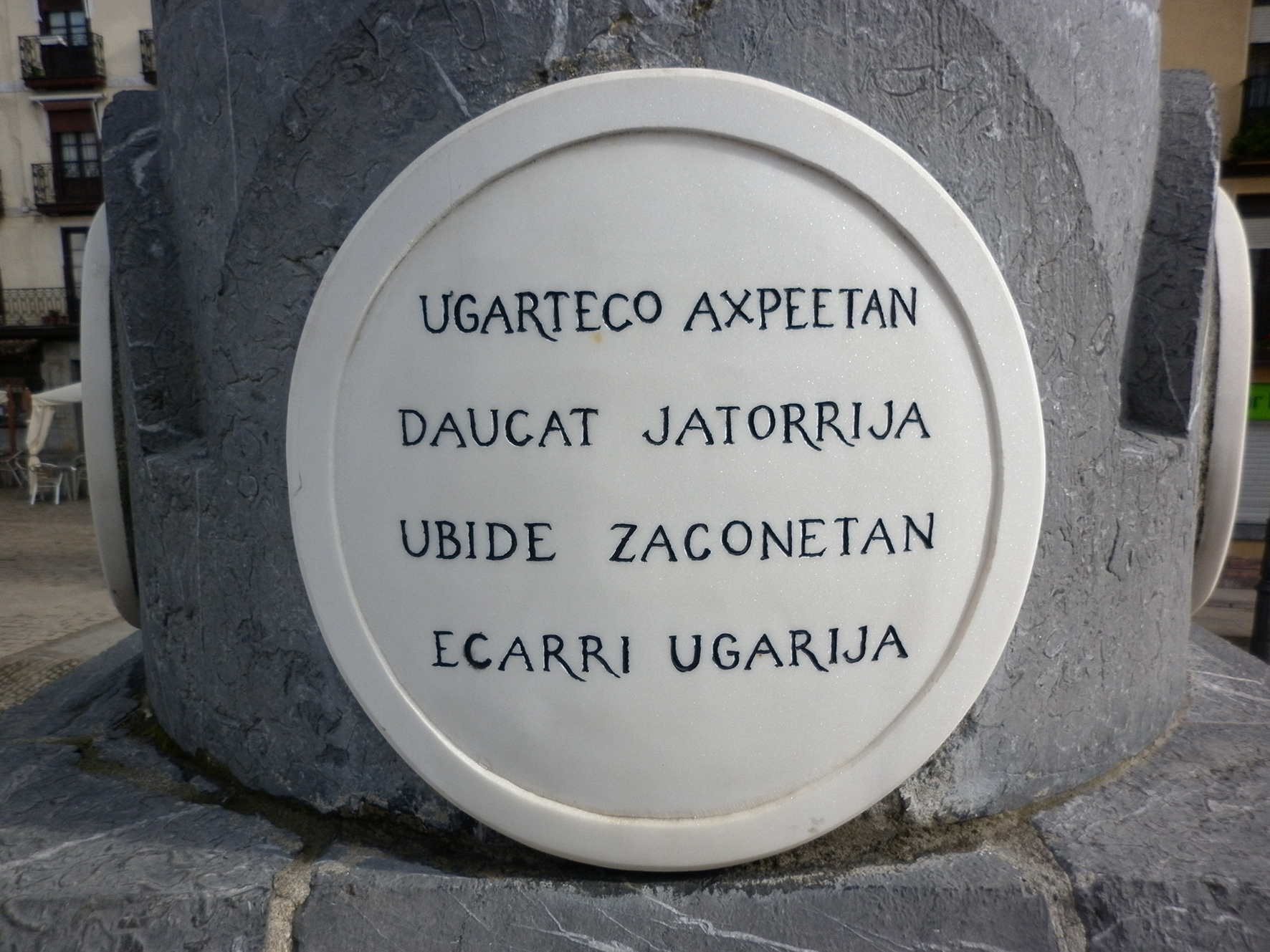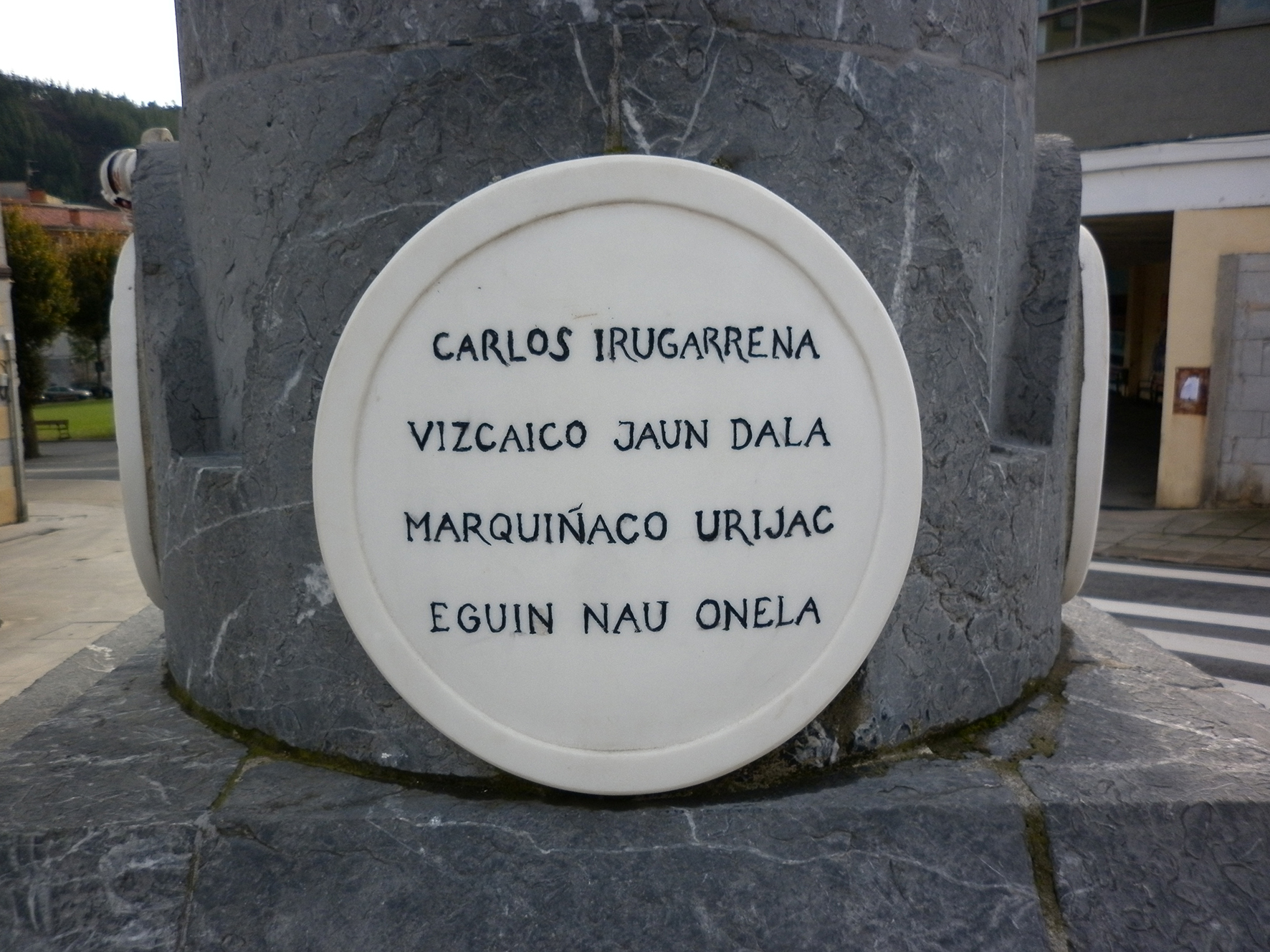The Goikoportala fountain built in 1787 is a civil work that represents the culmination of the bringing of drinking water to Markina. A project “promoted in unison by the municipal authorities by a group of local intellectuals and by the main owners of churches, farmhouses , mountains and forges headed by the count of Peñaflorida, Mr. Xavier Maria de Munibe, the founder and perpetual director of the Royal Basque Society of the Friends of the Country” following the ideas of the Enlightenment. This work places Markina at the forefront of illustrated Basque urban planning. Francisco de Echanove’s project consists of a limestone column topped by garlands and crowned by a replica of the original pointed dome. At the bottom of the column there are four white stone ovals, one of which shows the town’s coat of arms and the other three, some quatrains that refer to the construction of the fountain and that are attributed to Juan Antonio Moguel (1745 -1804), a religious who practiced in the parish of Xemein and author of the literary work Peru Abarka written at the beginning of the 19th century in Biscayan Basque.
History
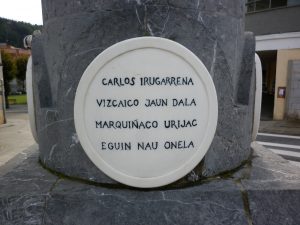
Being Lord of
Bizkaia Carlos III,
Markina’s villa has
Made me like this.
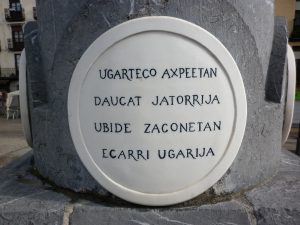
I sprout under the rocks of
Ugarte and by channels
deep abundant hand
and generous.
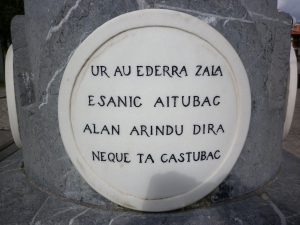
Because this water is good,
in the opinion of experts,
effort and expense
have been worth it.
Goiko Portala Kalea 1
48270 Markina-Xemein, Bizkaia
Images (11)
Continue visit:
Following monuments




